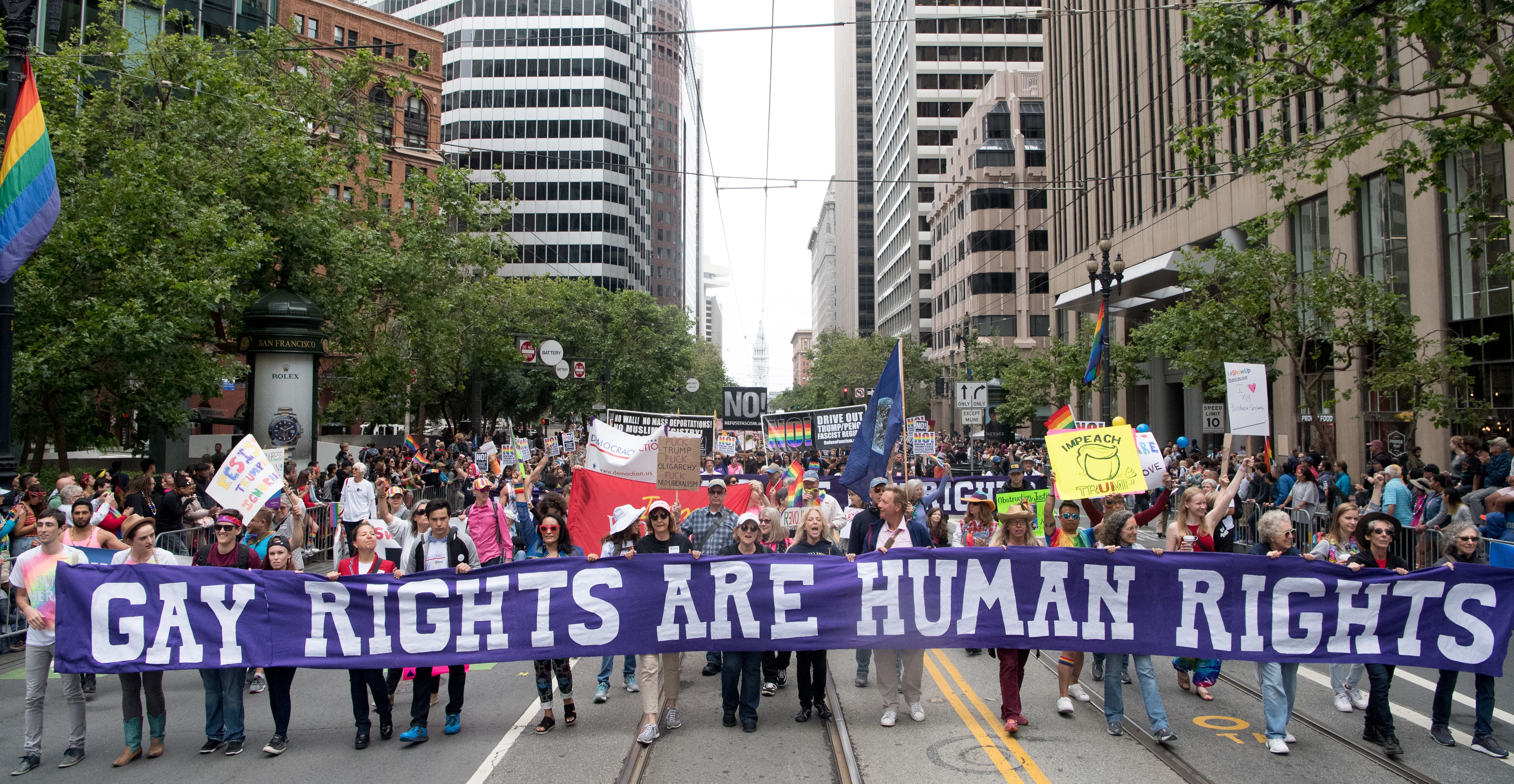In some respects, it’s easy to claim that LGBTQ rights are thriving in the United States. After all, marriage equality is the law of the land, and, just last year, the country bore witness as the first openly transgender person spoke at a national party convention. Still, too often, apparent progress toward queer equality can obscure an undertow of anti-LGBTQ violence.
According to a new study from RTI International, a non-profit research firm based in North Carolina, despite the widespread perception that society is becoming more accepting of LGBTQ people, rates of violent crimes against this group “have not improved since the 1990s,” when they were first measured. Indeed, the study goes further, suggesting that “some forms of victimization, particularly those affecting youth, appear to be worsening.” In particular, the analysis—which investigated troves of research from the past two decades on violence in LGBTQ communities, as well as data from focus groups and individual interviews—concludes that LGBTQ people are more likely than their heterosexual peers to experience targeted violence “in disproportionate numbers throughout childhood, adolescence, and adulthood.” The study also confirms that physical and verbal abuse of LGBTQ students at school is ubiquitous, and that LGBTQ people are more often victimized by their close family members or partners, as opposed to by acquaintances or strangers, with bisexual women especially likely to face backlash.
Other studies back up RTI’s analysis. Last month, for instance, the Center for American Progress, a progressive think tank based in Washington, D.C. (disclosure: I used to work there) found that, in the past year, some 25 percent of respondents to a nationally representative survey had experienced discrimination because of their sexual orientation. The ongoing stress of this discrimination prompts many LGBTQ people to “make subtle but profound changes to their everyday lives”—including camouflaging their style of dress or the pitch of their voice to perform in a more “normative” way—so that they can “minimize the risk of experiencing discrimination.”

(Photo: Josh Edelson/AFP/Getty Images)
In 2017, we almost take for granted the status of visibility within the movement—it’s become an essential strategic element in present-day LGBTQ advocacy, an obvious good, as open and shut as the closets so many of us seek to leave behind. But the situation is hardly so clear-cut. Transgender people, for one, have a degree of mainstream visibility that didn’t exist even a decade ago—yet they’ve been welcomed by scores of bills that police their access to public accommodation. And as one of the authors of RTI’s study on LGBTQ victimization told The Daily Beast, school bullying of LGBTQ students, as a whole, has reached “unprecedented highs” in recent years.
This is hardly a call to duck back into the closet. Rather, as we continue to celebrate, rightly, greater queer visibility—not least during this month’s capital-P Pride season—it seems wise, as well, to investigate how we might extinguish the regrettable vulnerability that’s accompanied the “outness” queer people have been able to express in the years since the Stonewall riots in 1969 and even the landmark Obergefell v. Hodges in 2015. Such efforts should include, as RTI and CAP both note, bolstering support for non-discrimination protections for LGBTQ people on the state and local levels and broadening the scope of resources available to LGBTQ victims. Furthermore, in the context of today’s brand of intersectional advocacy, let’s remember that the next frontier in the push for LGBTQ equality can’t be severed from struggles against other forms of oppression.
Most important, even as we enjoy expanded visibility, we ought to keep in mind the importance of building up, wherever possible, the sort of queer spaces in which this change can flourish.




